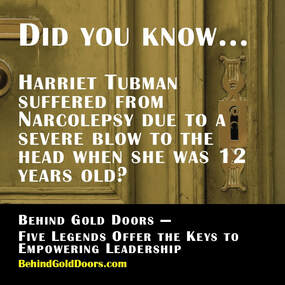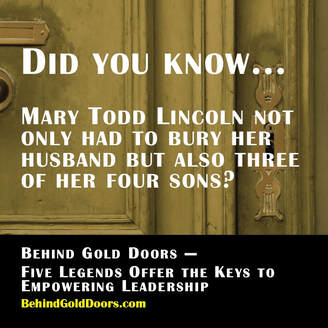
“This is a big price tag,” Rhonda said as she looked through Tom’s proposal.
Tom didn’t expect the resistance he was getting from Rhonda, his organization’s vice president. Tom had just been promoted to manager of a small team and was in it to make a splash in the organization. He unveiled a bold proposal to implement new enterprise software that would replace an existing system that had been in place for several years. “Yes, it’s a high price, but this is leading-edge technology that will help propel us into the future. Our current system uses old technology that will be obsolete. Now is the time to act.” “But what we have is working and stable,” Rhonda said. Tom’s frustration grew with Rhonda’s resistance. “Yes, today it’s working, but what about tomorrow?” Tom asked. Rhonda looked at her watch. “Tom, we’re just about at time. Let me give you a bit of coaching.” Rhonda was big on cultivating her staff and used situations like this as teachable moments. “Um, OK,” Tom said. “I love your passion and creativity. Those attributes will serve you well as you progress in your career. Do you want to know where you missed the mark on this proposal?”
0 Comments

“He’s clueless,” Alan said to his peer, Tracy as they walked out of the meeting.
Alan had gone into his presentation to his VP, Amir thinking it was in the bag. What in his mind should have been a slam dunk turned out to be 30 minutes of inquisition-like questions, debating of assumptions, and skepticism of his solution, all followed by a “We’re not going to do this.” “I just can’t believe how out of touch he is,” Alan continued. “The solution is as plain as the nose on his face, and he can’t see beyond his own incompetence!” Tracy was quiet as the two walked and Alan continued to sputter. After a few minutes, Alan couldn’t help but notice Tracy’s silence. “What do you think?” Alan asked. “How about we go in the conference room and chat,” Tracy said. “Sure.” Alan had always respected Tracy’s judgment and how she commanded the respect of not just peers and followers, but also her management. The two went into the conference room, Alan shut the door, and they sat. “Alan, you’re incredibly bright and very passionate about your work.” “But. . .” Alan said, waiting for the other shoe to drop. “You haven’t yet mastered how to sell up.” “Sell up?” “That’s right.” 
The Israeli Defense Force (IDF) Special intelligence Unit 9900 is dedicated to everything related to geography, including mapping, interpretation of aerial and satellite photographs, and space research. Within this unit there is another, smaller unit of highly qualified soldiers who can detect even the smallest details—the ones usually undetectable to most people.
These soldiers all have one thing in common; they are on the autism spectrum. Their job is to take visual materials from satellite images and sensors in the air. With the help of officers and decoding tools, they analyze the images and find specific objects within the images that are necessary to provide the best data to those planning missions. The IDF has also found that soldiers with autism can focus for longer periods of time than their neurotypical counterparts. This story speaks to me personally. My son Trevor was diagnosed with autism at age five. The only thing I knew about autism at the time was Dustin Hoffman’s Rainman character. Raising a son on the spectrum drastically changed my point of view on disability inclusion, seeing strengths through the challenges, and cultivating those strengths while accommodating the challenges. He’s a grown man today, living on his own, working, paying his bills, saving money, and building relationships. His strengths outweigh his challenges. The same reckoning with his strengths and challenges can lead to success with overseeing how an organization thrives, but how do you begin to ensure inclusion of disabled people’s strength in the workplace at scale with at an organization level? It has to start at the board and C-suite level. 
Sheesh.
Recently I received two LinkedIn requests to connect, one from a rep at a well-known insurance company and the other from a financial planner at a well-known financial services company. In the first request the rep told me that the insurance company notified him that my construction company is eligible for a special program that grants an immediate discount. Sounds great; the problem is I don't own a construction company. Twice I asked him to tell me who at the insurance company notified him. He finally responded with a “nobody notified us,” even though in his original message he was “notified by <insurance company> that my construction business qualifies for the discount.” |
Topics
All
Reprints
Contact Lonnie about article reprints. Please specify article you wish to reprint. Backlist
See Lonnie's Amazon Author Page Archives
July 2024
|
Lonnie Pacelli - Building Thriving Leaders™
Insightful | Creative | Direct Advice to Help Leaders Help Themselves
Keynote Speaker | Board Director | Autism Advocate | Author | Project Management Expert | Microsoft/Accenture Veteran
See his books on Amazon
Insightful | Creative | Direct Advice to Help Leaders Help Themselves
Keynote Speaker | Board Director | Autism Advocate | Author | Project Management Expert | Microsoft/Accenture Veteran
See his books on Amazon
Services |
About
|
© COPYRIGHT 2019. ALL RIGHTS RESERVED.
We are a participant in the Amazon Services LLC Associates Program, an affiliate advertising program designed to provide a means for us to earn fees by linking to Amazon.com and affiliated sites.
|

 RSS Feed
RSS Feed